The South Shetland Islands, located in the Southern Ocean, are home to a variety of bird species. These islands are one of the key locations for birdwatching in Antarctica, with over 46 species of birds recorded.
Among these species, the most fascinating are the penguins, albatrosses, petrels, and gulls. These seabirds have adapted to life in the harsh conditions of the cold, windy, and icy environment of the South Shetland Islands.
Apart from offering panoramic views of white and blue-tinted glaciers and icy landscapes, a visit to these islands provides bird lovers with a rare opportunity to witness some of the most incredible and unique species of birds.
1. Procellariidae
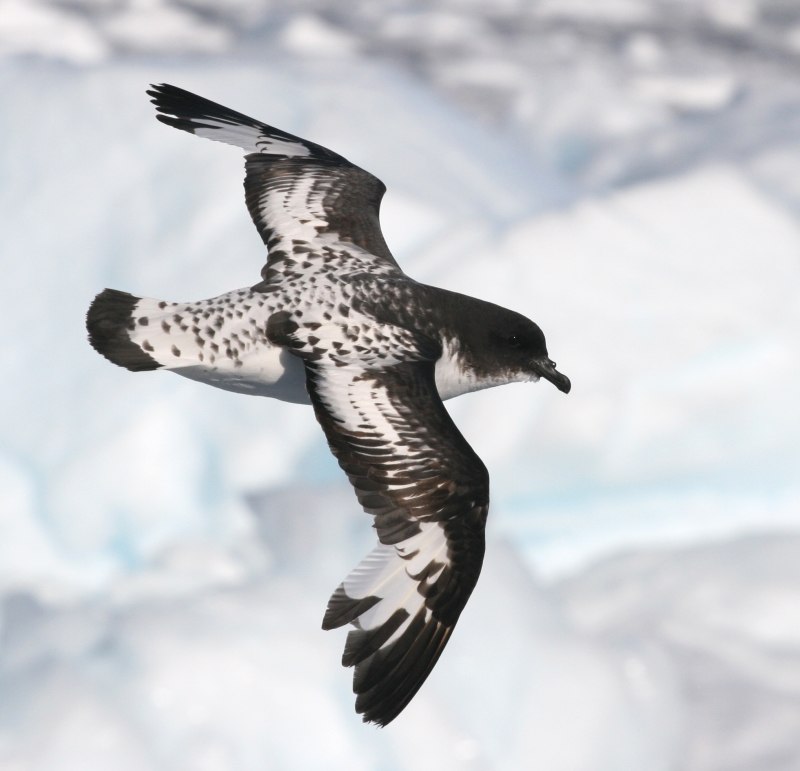
Procellariidae is a diverse family of seabirds belonging to the bird order Procellariiformes.
These birds are commonly referred to as tubenoses and include fulmarine petrels, gadfly petrels, diving petrels, prions, and shearwaters.
They range in size from the small storm-petrel which measures around 18cm long to the giant albatross which can reach up to 3 meters in length.
Generally found near oceans or coasts where they feed on fish as well as squid and other marine life depending on species.
Many procellariids will also nest inland during breeding season before returning back out at sea for most of their lives.
Their wings have specially adapted feathers that give them incredible gliding abilities allowing them literally fly with minimal effort over vast distances across oceanic regionsScientific classification:
| Kingdom | Animalia |
| Phylum | Chordata |
| Class | Aves |
| Order | Procellariiformes |
| Family | Procellariidae Leach, 1820 |
Also Featured In: Most common Birds in France, Birds You’ll Find in the Sea
2. Skuas
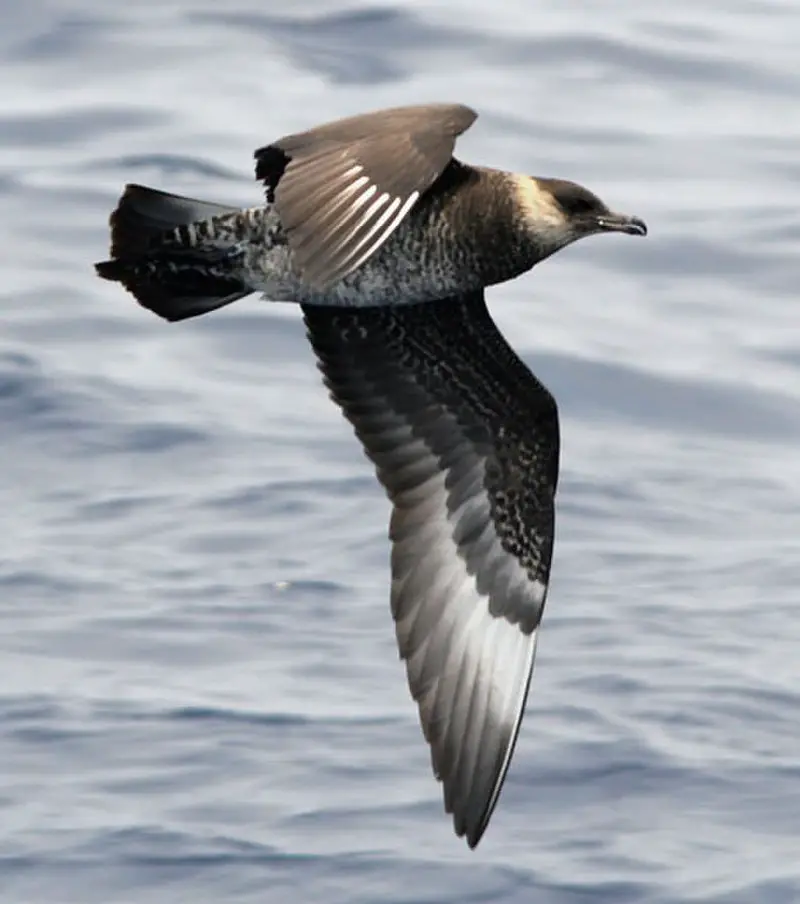
Skuas are a group of predatory seabirds with seven species, all belonging to the genus Stercorarius.
They are also known as “Jaegers” in North America and their name originates from the Faroese word for Great Skua – skúgvur.
These birds typically inhabit coastal areas or open oceans where they feed on fish, krill and other marine creatures.
Skuas can be distinguished by their pointed wings which help them fly long distances while hunting food.
Their distinctive colouration varies depending on age and habitat but generally includes greyish brown upperparts and white underparts with black streaks along its belly area.
The overall size ranges from 24-40 cm making these one of the larger sea bird species.Scientific classification:
| Kingdom | Animalia |
| Phylum | Chordata |
| Class | Aves |
| Order | Charadriiformes |
| Suborder | Lari |
| Family | Stercorariidae Gray, 1871 |
| Genus | Stercorarius Brisson, 1760 |
Also Featured In: Birds of Morocco, Turkey Birds You Should Know
3. Antarctic Petrel
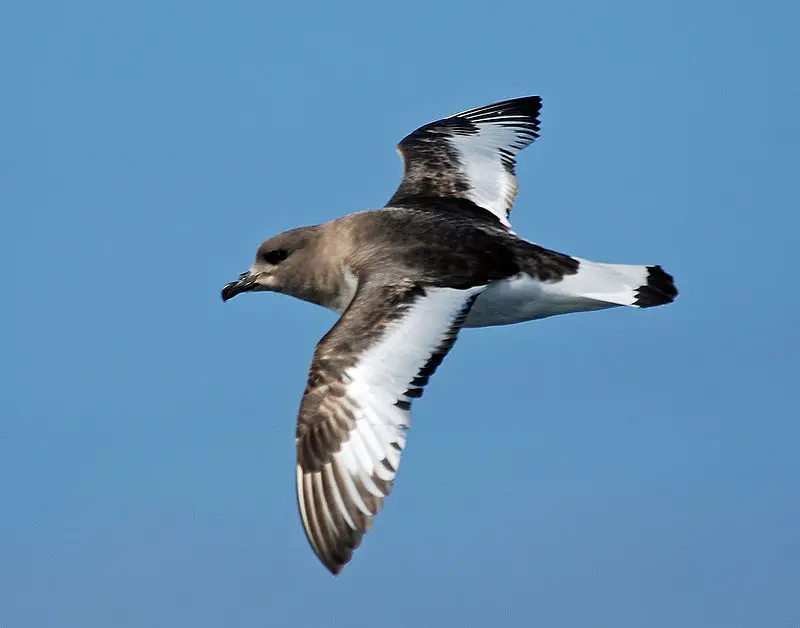
The Antarctic petrel is a dark brown and white boldly marked petrel, found mainly in the Ross and Weddell Seas of Antarctica.
It feeds on krill, fish, and small squid while swimming but can also dive from both the surface or air.
The bird was first seen by Captain James Cook during his second voyage to the south Pacific in 1773.
These birds have strong wings which allow them to stay aloft for long periods of time whilst searching for food over vast distances.
They are incredibly social creatures that travel together in large flocks when not breeding season; however they become very territorial when it comes to nesting sites where they will fiercely defend their territory against any intruders.Scientific classification:
| Kingdom | Animalia |
| Phylum | Chordata |
| Class | Aves |
| Order | Procellariiformes |
| Family | Procellariidae |
| Genus | Thalassoica Reichenbach, 1853 |
| Species | T. antarctica |
Also Featured In: New Zealand Birds,
4. South Polar Skua
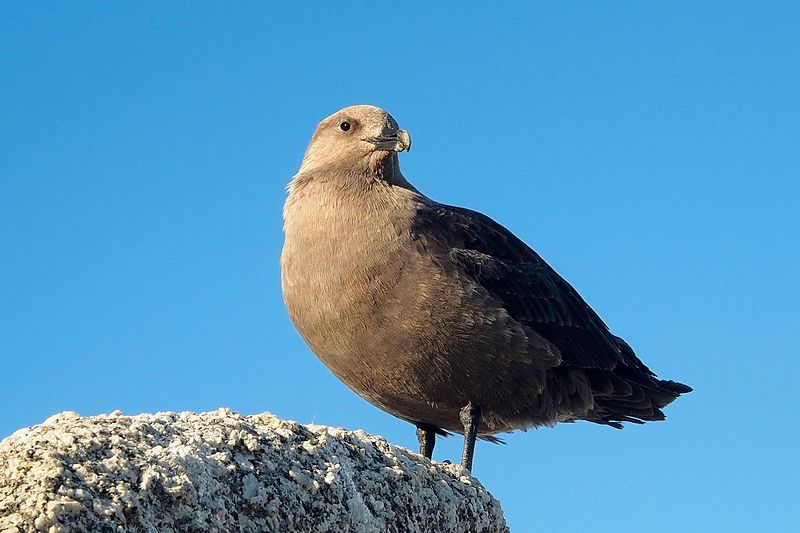
The South polar skua is a large seabird of the Stercorariidae family, also known as MacCormick’s skua after explorer and naval surgeon Robert McCormick.
It has an impressive wingspan of up to 110 cm and can weigh up to 1 kg.
It loves cold climates such as Antarctica or Southern Ocean islands where it breeds on rocky slopes in summer months.
These birds feed mainly on fish which they catch by plunge-diving from mid-air into the ocean surface; they will even scavenge food scraps left behind by other sea creatures.
The South Polar Skua is classified as “Near Threatened” due to its decreasing population numbers over recent years, primarily caused by human activity such as fishing practices and climate change.Scientific classification:
| Kingdom | Animalia |
| Phylum | Chordata |
| Class | Aves |
| Order | Charadriiformes |
| Family | Stercorariidae |
| Genus | Stercorarius |
| Species | S. maccormicki |
Also Featured In: Mauritius birds,
5. Black-Browed Albatross
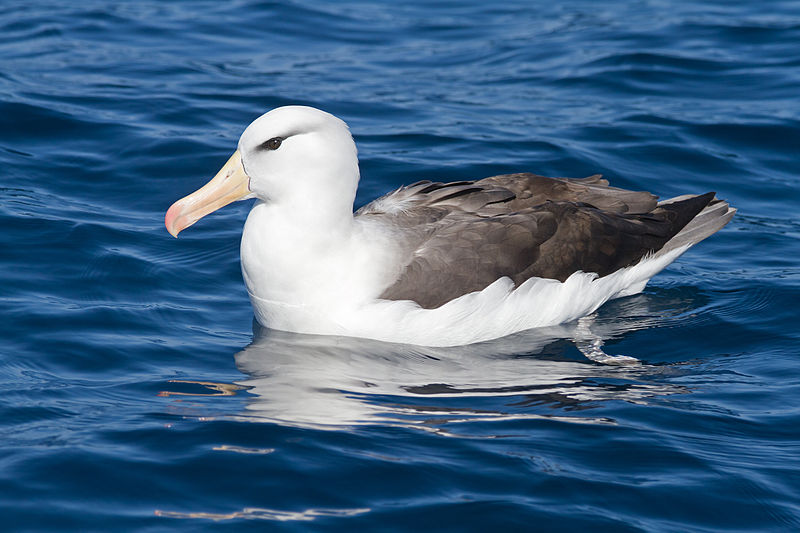
The Black-browed Albatross is a majestic seabird that belongs to the albatross family known as Diomedeidae.
It is an impressive bird, with its black beak and brow contrasting against white plumage on its wings and body.
The most widespread and common member of this group, it can often be seen flying around oceans in different parts of the world.
These birds share many features with other members of their order Procellariiformes, such as shearwaters, fulmars, storm petrels and diving petrels; they all have long wingspans for gliding effortlessly above water surfaces.
They feed mainly by scavenging or hunting small fish near sea surface while flying low over waters.
Its population has unfortunately declined due to commercial fishing vessels which attract them closer to shore resulting in entanglement into fishing nets leading them towards mortality.Scientific classification:
| Kingdom | Animalia |
| Phylum | Chordata |
| Class | Aves |
| Order | Procellariiformes |
| Family | Diomedeidae |
| Genus | Thalassarche |
| Species | T. melanophris |
Also Featured In: Antarctica Birds, Birds that Live in the Ocean
6. Antarctic Tern
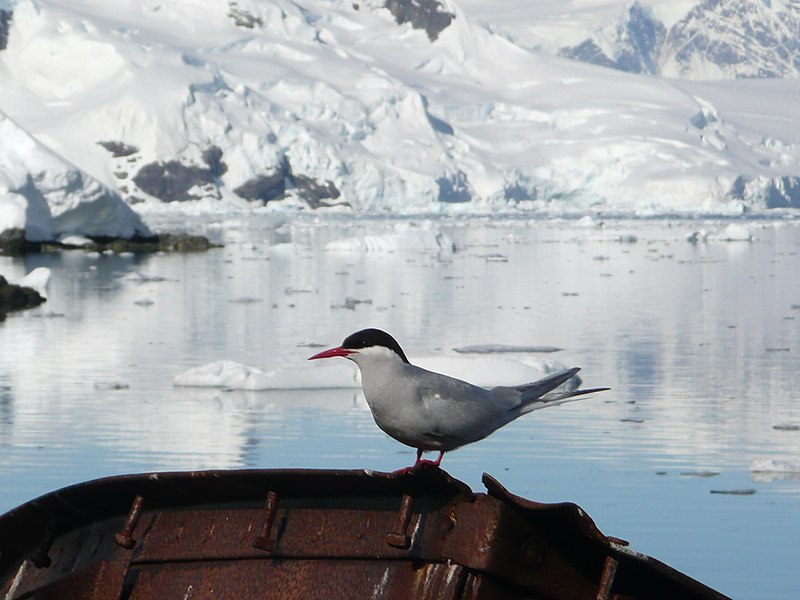
The Antarctic tern is a seabird in the Laridae family. It inhabits southern oceans, small islands around Antarctica and mainland coasts.
This stocky bird has similar features to its relative Arctic Tern but can be identified by its breeding plumage of white feathers with black markings on head, wings and tail.
Its diet mainly consists of fish, crustaceans and other marine animals which it catches during dives or while hovering over water surface.
The Antarctic terns breed between October-March when they congregate near coastal areas where they can find plenty of food for themselves as well as their young ones.
These birds make impressive long distance travels each year back to the same locations making them true ocean wanderers.Scientific classification:
| Kingdom | Animalia |
| Phylum | Chordata |
| Class | Aves |
| Order | Charadriiformes |
| Family | Laridae |
| Genus | Sterna |
| Species | S. vittata |
Also Featured In: Birds That Live In Heard Island and McDonald Islands,
7. Southern Fulmar
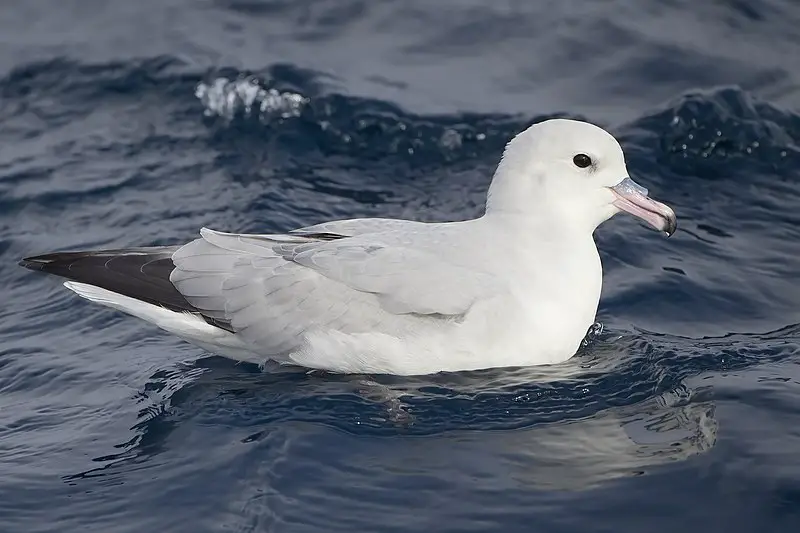
The Southern fulmar is a species of seabird found in the southern hemisphere. It has an overall pale grey body and white underparts, with a unique white patch on the wings.
Its breeding season takes place mainly along coastlines, where it builds its nest to lay eggs.
These birds are often seen soaring through the skies or bobbing atop waves near coasts during their migration periods as they search for food which includes fish, squid, crustaceans and other marine creatures.
Their diet also consists of carrion such as dead seals or whales floating at sea that are scavenged upon by these opportunistic omnivores.
With increasing concern over environmental protection and conservation efforts for oceanic wildlife habitats worldwide, this remarkable species will no doubt continue to play an important role in maintaining balance within our fragile ecosystems across the globe.Scientific classification:
| Kingdom | Animalia |
| Phylum | Chordata |
| Class | Aves |
| Order | Procellariiformes |
| Family | Procellariidae |
| Genus | Fulmarus |
| Species | F. glacialoides |
Also Featured In: Most Common Birds in Stewart Island,
8. Cape Petrel
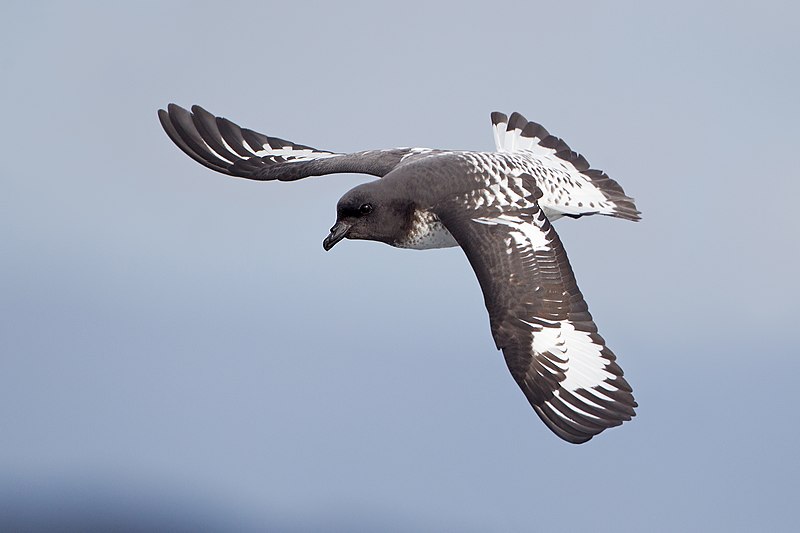
The Cape petrel is a seabird from the Procellariidae family that lives in the Southern Ocean. It is the only species of its genus and has many allies, including fulmarine petrels and giant petrels.
This species is abundant with an estimated population of around two million individuals. Its plumage consists mainly of dark grey on top and white underneath, making it easily identifiable when flying overhead or perched atop rocks along shorelines.
They usually feed at night while searching for fish, crustaceans, squid and other marine life near surface waters using their strong sense of smell to find prey in low light conditions.
Cape Petrels are often seen gathering into large flocks as they migrate between Antarctic seas during winter months before returning home to breed during summertime where they form large colonies along coastlines throughout southern oceans such as New Zealand’s South Island coasts.Scientific classification:
| Kingdom | Animalia |
| Phylum | Chordata |
| Class | Aves |
| Order | Procellariiformes |
| Family | Procellariidae |
| Genus | Daption Stephens, 1826 |
| Species | D. capense |
Also Featured In: Tundra Birds, Most Common Birds of Sierra Islands
9. Chinstrap Penguin
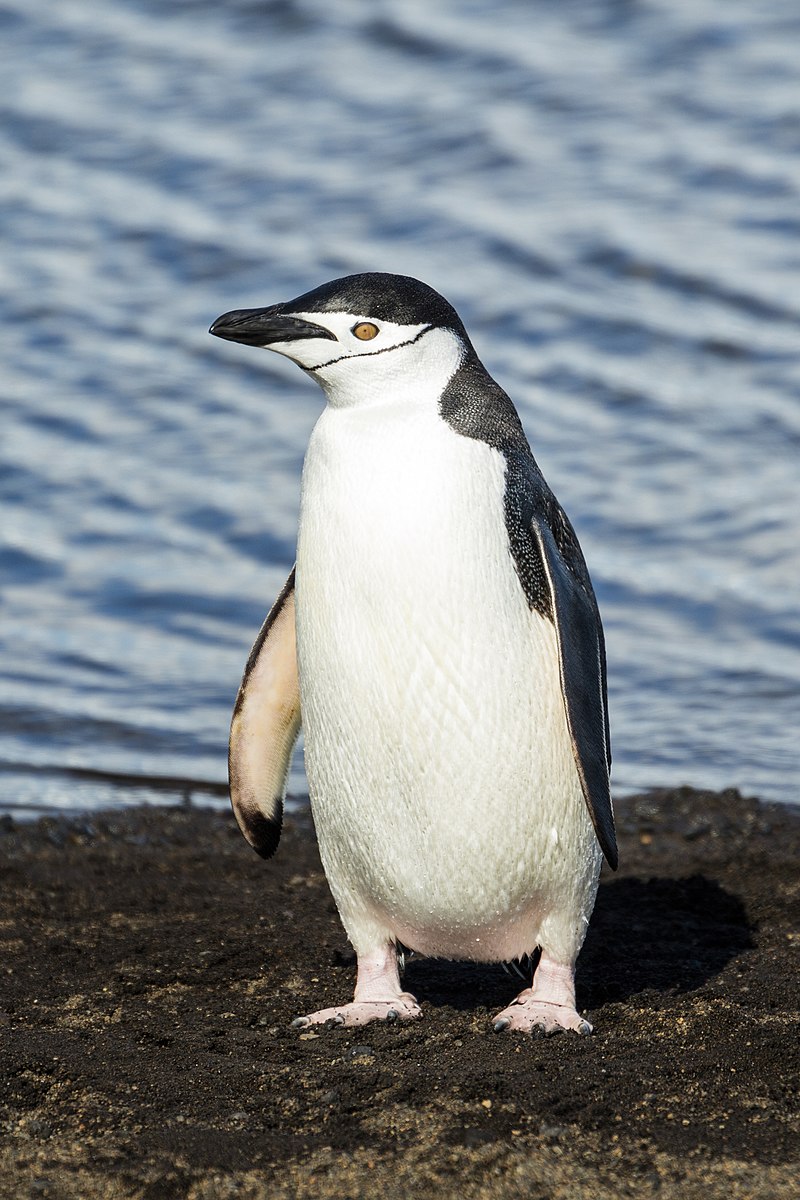
Chinstrap penguins are a fascinating species of birds found in the Southern Pacific and Antarctic Oceans. They have distinct black bands around their heads, making them easy to identify.
These penguins stand up to 70 cm tall with adults weighing an average of 3-4 kgs. Their diet mostly consists of krill, shrimp and small fish which they catch while swimming underwater or scavenging for food on land.
Chinstraps are very social animals that form large colonies when breeding – during this time males will fight each other over territory rights.
As well as being fun to watch these little fellows can also be quite noisy too.
All in all chinstrap penguin is one amazing bird that deserves our admiration and respect – it’s no wonder why they’re so beloved by many people across the globe.Scientific classification:
| Kingdom | Animalia |
| Phylum | Chordata |
| Class | Aves |
| Order | Sphenisciformes |
| Family | Spheniscidae |
| Genus | Pygoscelis |
| Species | P. antarcticus |
10. Antarctic Prion
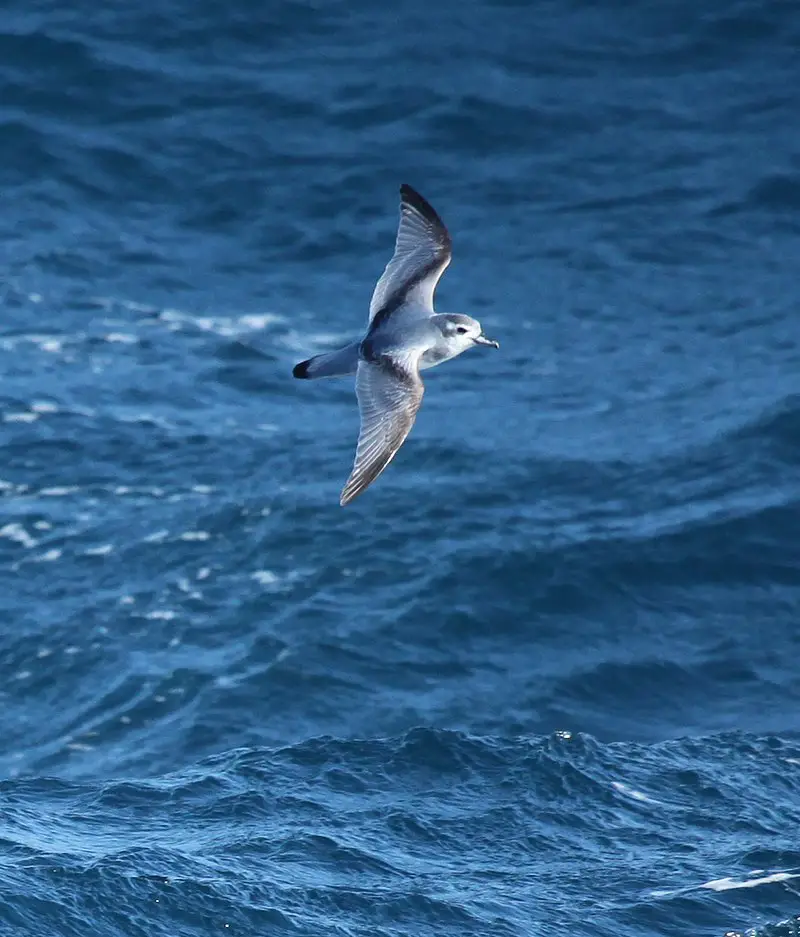
The Antarctic Prion is the largest of all prions, a genus of small petrels found in the Southern Ocean.
It was first described by German naturalist Johann Friedrich Gmelin in 1789 as part of an updated edition to Carl Linnaeus’ “Systema Naturae” and placed with other petrels under his own Pro genus.
The bird has two distinct morphs – one dark gray-brownish back color and another lighter gray morph that can be spotted during migrations across different parts of Antarctica’s coastlines.
Its diet consists mainly of crustaceans and fish which it scoops up while flying through surface waters on its long wingspan.
While they are often seen alone or in pairs, large groups may also form when feeding near krill concentrations or human settlements such as research stations around Antarctica’s coasts.Scientific classification:
| Kingdom | Animalia |
| Phylum | Chordata |
| Class | Aves |
| Order | Procellariiformes |
| Family | Procellariidae |
| Genus | Pachyptila |
| Species | P. desolata |
Also Featured In: Beautiful Birds Found in Central Islands, Birds That Live In Tristan da Cunha
11. Slender-Billed Prion
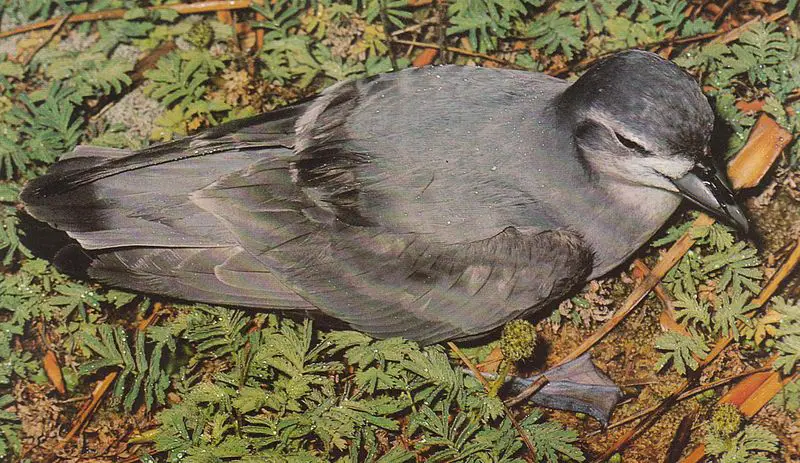
The Slender-billed prion is a species of seabird found in the southern oceans. It was formally described and named by Australian ornithologist Gregory Mathews in 1912 under its binomial name Heteroprion belcheri, before being placed with other prions in the genus Pachyptila.
This unique bird has slender bills that are adapted for filtering food from seawater as well as a long wingspan which helps them to soar over large distances when migrating or searching for prey.
They mostly feed on small fish, squid, crustaceans and jellyfish but have also been known to eat carrion if necessary.
The Slender-billed Prion’s feathers are typically dark greyish brown above and white below, blending into their natural oceanic environment perfectly.Scientific classification:
| Kingdom | Animalia |
| Phylum | Chordata |
| Class | Aves |
| Order | Procellariiformes |
| Family | Procellariidae |
| Genus | Pachyptila |
| Species | P. belcheri |
12. Light-Mantled Albatross
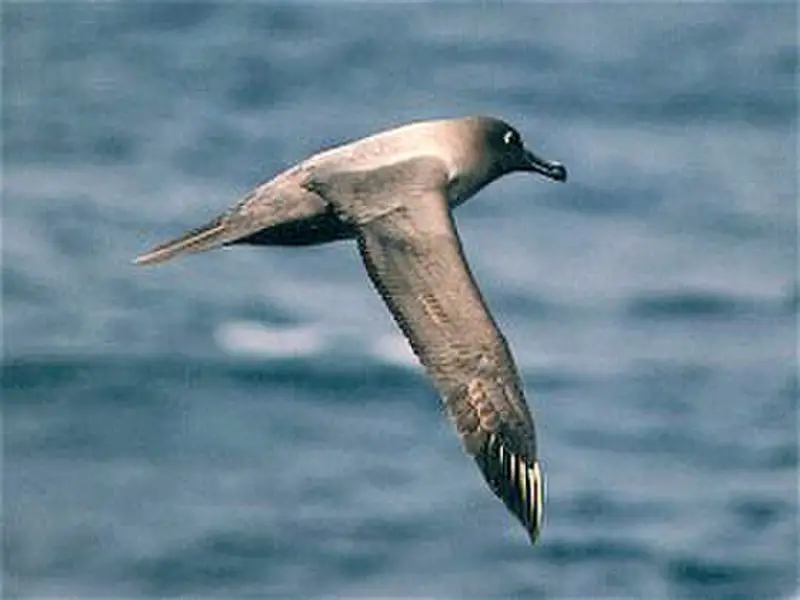
The Light-mantled Albatross is a small seabird found in the genus Phoebetria. It has a grey mantle and sooty feathers, which gives it its name.
They are usually seen skimming close to the surface of the ocean, occasionally taking short flights over long distances.
This bird can be found flying near offshore islands or along coastlines around parts of South America, New Zealand and Australia’s southern coasts.
The diet mostly consists of squid and fish they catch while gliding above water surfaces.
Their breeding season begins at late August where pairs build nests on slopes located within remote areas with dense vegetation cover like grasslands or shrubbery patches that provides protection from predators for their young ones until fledging takes place after three months since hatching occurs during November-December period when winds become stronger making takeoff easier for chicks upon maturity as adults reach up about 75cm in length with wingspans more than 170 cm wide.Scientific classification:
| Kingdom | Animalia |
| Phylum | Chordata |
| Class | Aves |
| Order | Procellariiformes |
| Family | Diomedeidae |
| Genus | Phoebetria |
| Species | P. palpebrata |
13. Blue Petrel
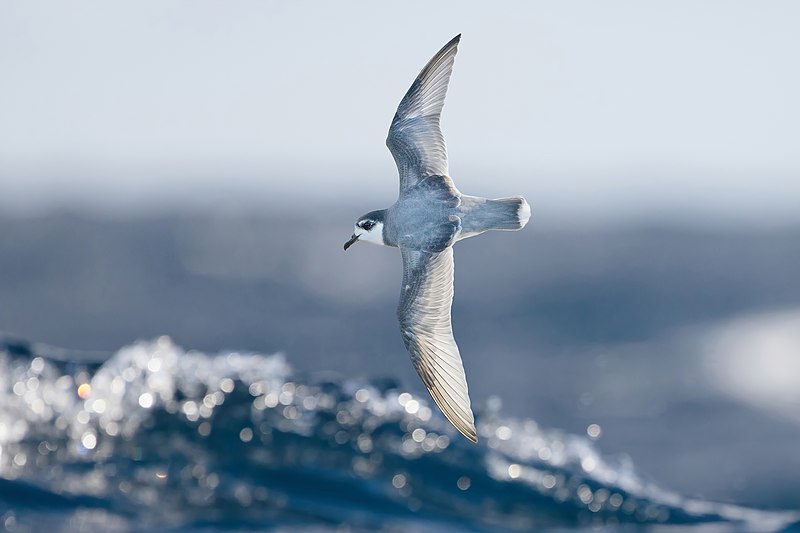
The Blue Petrel is a small seabird of the Procellariidae family, found in the Southern Ocean. It is easily distinguished by its blue plumage and short forked tail.
The only species in its genus Halobaena, it has close genetic ties to Prions. Breeding mainly near Antarctic Convergence zone at various isolated island sites, this bird was first described in 1777 by German naturalist Peter Simon Pallas.
Its diet consists mostly of krill along with squid and fish which they plunge-dive into ocean waters to catch their prey before returning back to nest on land or cliffside burrows where two eggs are laid each year.
They have adapted well over time thanks to their unique traits such as long wingspan enabling them travel far distances while being able to store food reserves during days without feeding opportunities due migration patterns across vast oceans.Scientific classification:
| Kingdom | Animalia |
| Phylum | Chordata |
| Class | Aves |
| Order | Procellariiformes |
| Family | Procellariidae |
| Genus | Halobaena Bonaparte, 1856 |
| Species | H. caerulea |
Also Featured In: Passage Islands Birds You Should Know, Common Birds of Weddell Island
14. Black-Bellied Storm Petrel
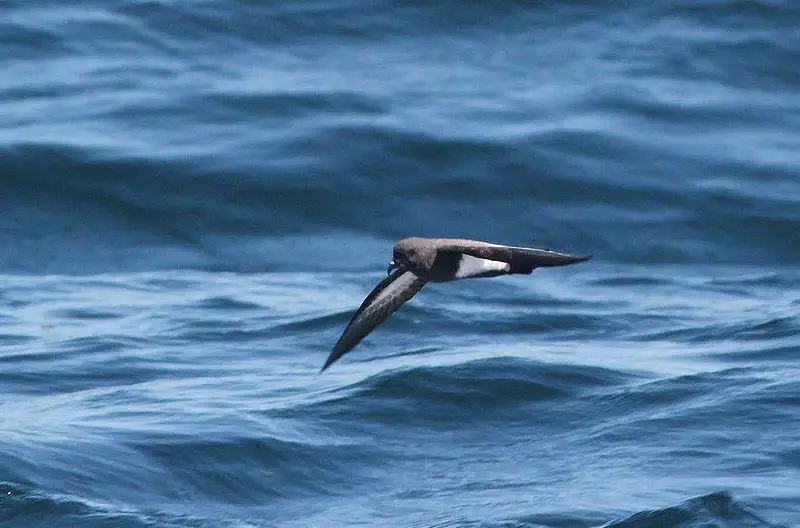
The Black-bellied Storm Petrel is a species of seabird belonging to the Oceanitidae family. It can be found in Antarctica, Argentina, Australia, Bouvet Island and many other countries in South America and Africa.
These birds are mainly dark brown with white bellies that have black markings on them. They feed primarily on small fish but will also take crustaceans such as krill or squid when available.
During breeding season they form colonies along rocky coasts where they lay one egg per year which hatch after about 40 days of incubation by both parents.
The fledglings then stay for around two weeks before taking flight for the open seas. This oceanic bird has an impressive range making it quite a common sight near coastlines all over the world.Scientific classification:
| Kingdom | Animalia |
| Phylum | Chordata |
| Class | Aves |
| Order | Procellariiformes |
| Family | Oceanitidae |
| Genus | Fregetta |
| Species | F. tropica |
Also Featured In: Black Birds in New Zealand,
15. Northern Giant Petrel
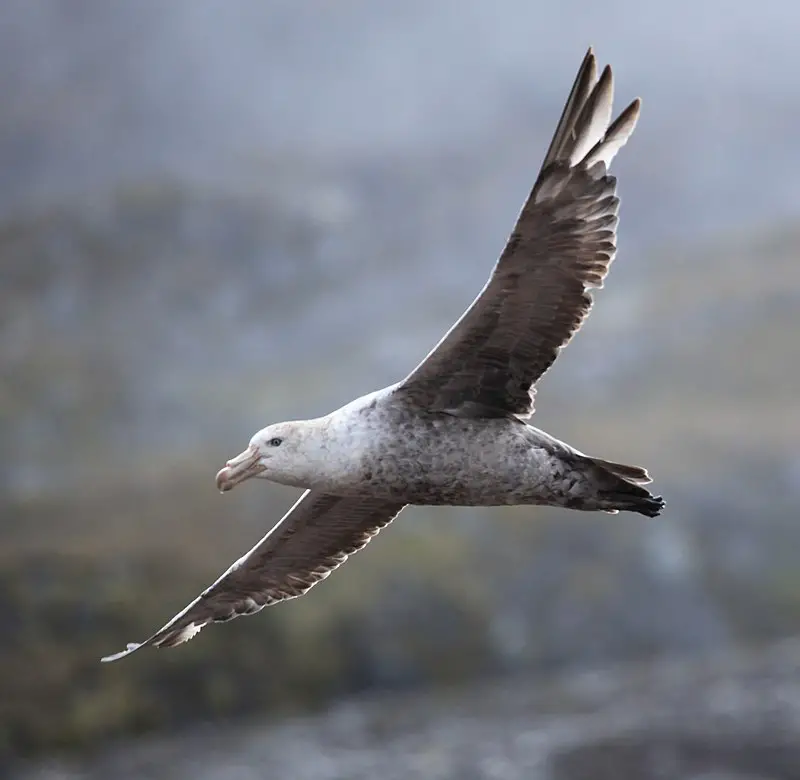
The Northern Giant Petrel is a large seabird of the southern oceans and belongs to the Macronectes family. It has broad distribution, overlapping with that of its cousin -the Southern Giant Petrel- but slightly northward.
First described in 1912 by Australian ornithologist Gregory Mathews as a subspecies of the Southern Giant Petrel, it reaches up to 75 cm long and weighs 3 kg on average.
Its plumage is dark grey above while white below, having black bill tipped with yellow or pink color along an orange line running from base to tip; its feet are also bright yellowish-orange in hue.
This species feeds mainly on fish and squid near coastal waters or scavenges carcasses farther away out at sea during winter months when food sources become scarce closer inland.Scientific classification:
| Kingdom | Animalia |
| Phylum | Chordata |
| Class | Aves |
| Order | Procellariiformes |
| Family | Procellariidae |
| Genus | Macronectes |
| Species | M. halli |
Also Featured In: Patagonia Birds You Should Know, Birds that Live in Gold Coasts
16. Antarctic Shag
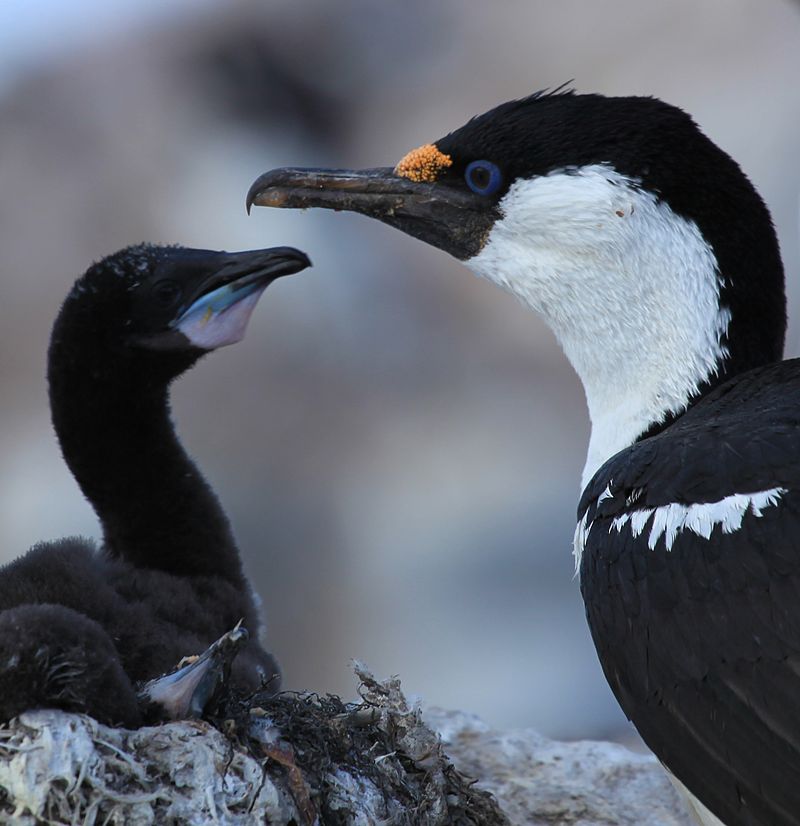
The Antarctic shag is a species of cormorant found in the Antarctic. It has many different names such as imperial cormorant, king cormorant, and blue-eyed shag.
The adult bird stands at around 75 to 77 cm tall with a wingspan of 120 cm. Its plumage consists mostly of dark black feathers with white on its face, throat and belly area while having bright blue eyes which can be seen easily from afar.
They feed mainly on small fish but may also eat krill or other crustaceans depending on availability.
These birds are usually observed by themselves when not breeding but tend to form large colonies during mating season for protection against predators like skuas or leopard seals that prey upon them.Scientific classification:
| Kingdom | Animalia |
| Phylum | Chordata |
| Class | Aves |
| Order | Suliformes |
| Family | Phalacrocoracidae |
| Genus | Leucocarbo |
| Species | L. bransfieldensis |
17. White-Crested Elaenia
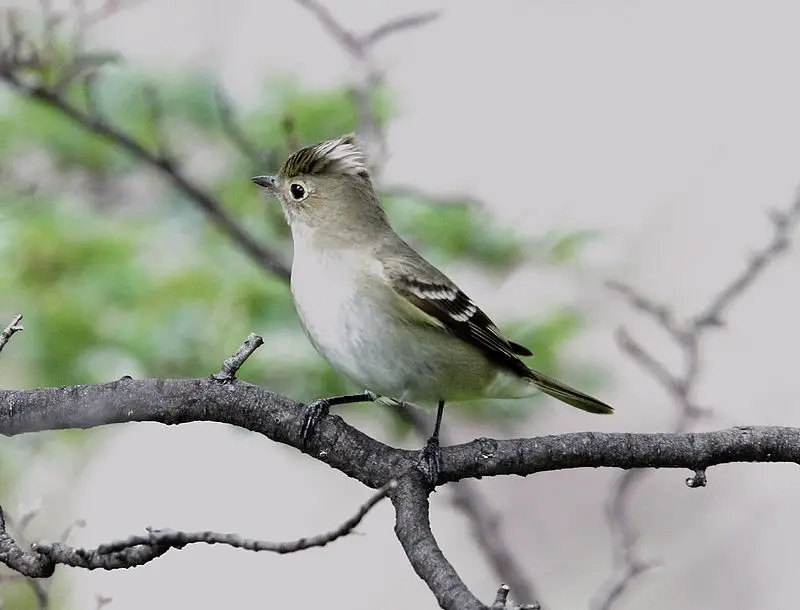
The White-crested elaenia is a bird belonging to the family Tyrannidae. It is found breeding across southern and western parts of South America, and migrates north in the winter.
This species has several subspecies and is typically found in temperate forests, subtropical or tropical moist montane forests, as well as subtropical or tropical high-altitude shrubland.
It has a distinct white crest on its head, which makes it easy to identify. The White-crested elaenia feeds primarily on insects and is known for its swift and acrobatic hunting techniques.
Due to habitat loss and fragmentation, along with other environmental threats, the White-crested elaenia is facing population declines in some regions.
Conservation efforts are needed to protect this species and its important role in its ecosystems.Scientific classification:
| Kingdom | Animalia |
| Phylum | Chordata |
| Class | Aves |
| Order | Passeriformes |
| Family | Tyrannidae |
| Genus | Elaenia |
| Species | E. albiceps |
Also Featured In: Common Birds that Live around Ushuaia,
18. Snowy Sheathbill
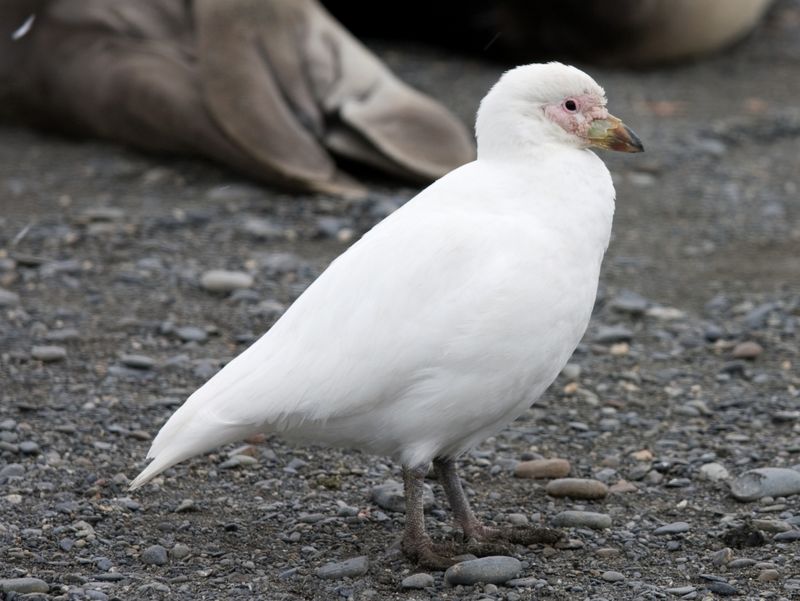
The snowy sheathbill, also known as the greater sheathbill, is a unique bird that is found on the Antarctic continent. This bird is the only land bird that is native to this area.
It is usually found on the ground and is easily recognized by its pale face. Johann Friedrich Gmelin formally described this bird in his revised and expanded edition of Carl Linnaeus’ work back in 1789.
The snowy sheathbill is one of two species of sheathbill and is also referred to as “paddy” by some. Despite being native to the harsh, snowy environment of Antarctica, this bird has adapted well and thrives in its natural habitat.Scientific classification:
| Kingdom | Animalia |
| Phylum | Chordata |
| Class | Aves |
| Order | Charadriiformes |
| Family | Chionidae |
| Genus | Chionis |
| Species | C. albus |
Also Featured In: Falkland Islands Birds You Need To Know,